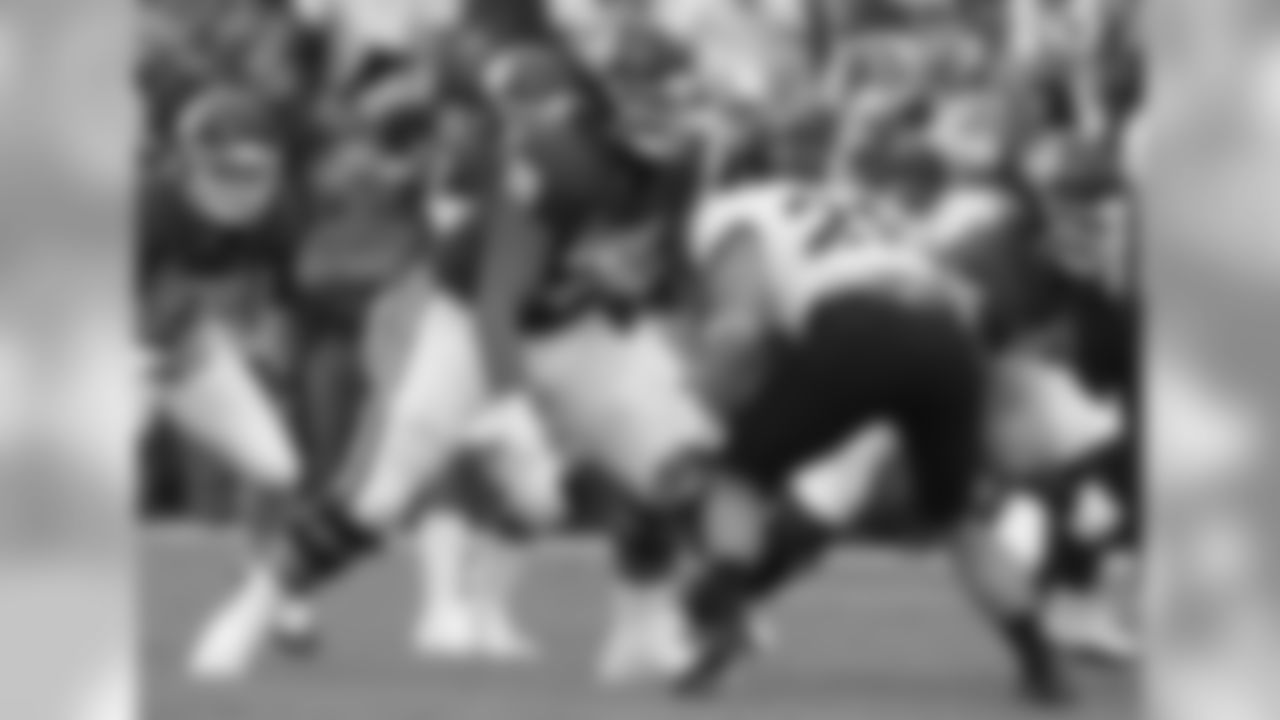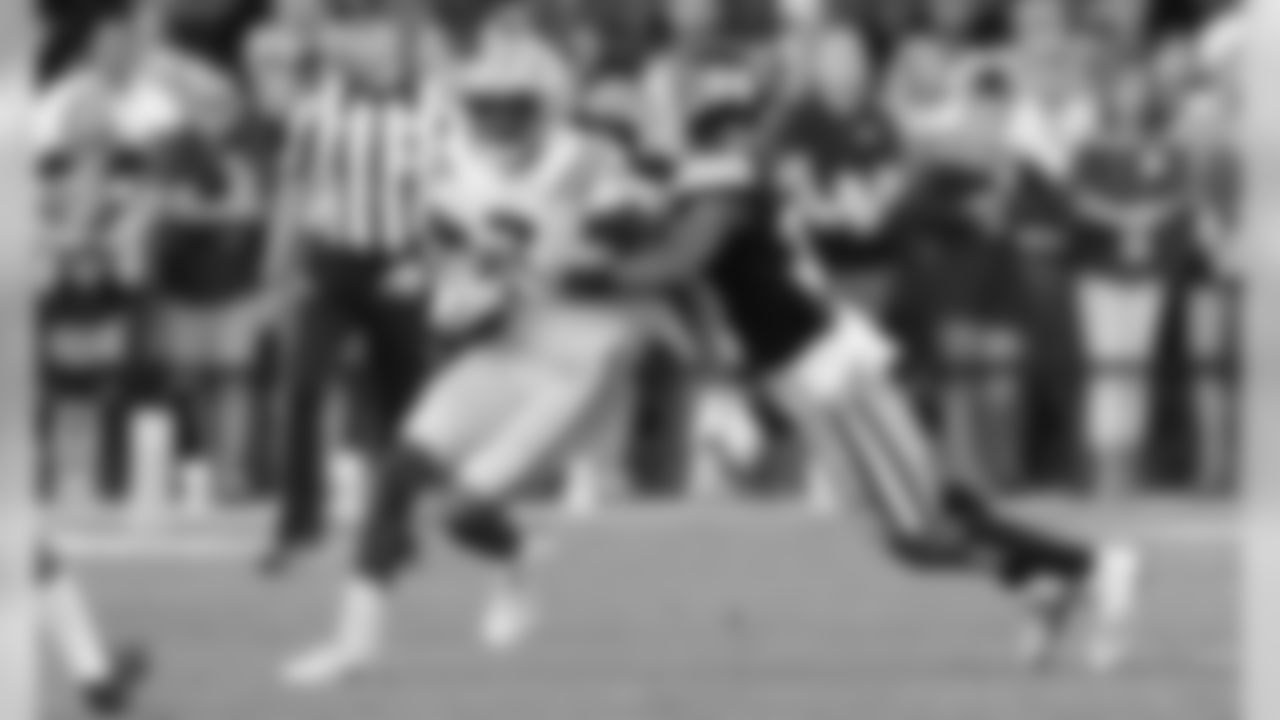In 1993, the Phoenix Cardinals selected running back Garrison Hearst with the third overall pick in the draft. Over the next 25 years, the NFL combined to use a top-five pick on a tailback 12 more times. That's 13 top-five backs in 26 drafts, or an average of one every other year.
The Tampa Bay Buccaneers contributed to that total but did so near the end of the run, nabbing Auburn's Cadillac Williams with the fifth pick in 2005. As we noted previously, a fundamental shift in league thinking would follow, with running backs getting less and less first-round attention. That trend peaked in 2013 and 2014 when, for the first time since the 1970 AFL-NFL merger, no running backs were taken in the opening round.
The NFL being an unfailingly cyclical business, running backs have begun to re-emerge as viable top-10 and even top-five draft-pick candidates. In the last three drafts, Ezekiel Elliott (fourth overall in 2016), Leonard Fournette (fourth in 2017) and Saquon Barkley (second in 2018) have all had their names called among the top five in the first round. The year before that run, Todd Gurley went 10th, and the Fournette pick in '17 was followed by Christian McCaffrey at number eight. There have been some hiccups for Fournette in Jacksonville but for the most part those five backs have delivered well on that heavy investment.
This is all relevant for the Buccaneers because they are slotted to pick fifth in the 2019 draft and they haven't had a particularly good running game since 2015. While Head Coach Bruce Arians and General Manager Jason Licht believe incumbent backs Peyton Barber and Ronald Jones can be productive in 2019, it's not surprising to see NFL analysts connect the dots in their mock drafts and give the Bucs a running back in the first round.
And that running back in every instance is Alabama's Josh Jacobs.
Could Jacobs be the next top-five running back? He has one very striking difference from the last three top-five backs: While Elliott, Fournette and Barkley all had 650 or more touches in three collegiate seasons, Jacobs logged just 299 in the same number of campaigns. In fact, the other five backs mentioned above averaged 604 carries and 677 touches in their college careers, which is more than double the 251 and 299 for Jacobs at Alabama.
So would a team invest a high draft pick – in the Bucs' case, number-five overall – on a back who rushed for fewer than 1,500 yards as a collegian? According to Jacobs, as he has met with a number of teams this week at the NFL Scouting Combine, NFL scouts and coaches seem to see that low usage total as a positive aspect of his resume.
"They bring it up, but they don't bring it up in a negative light," he said. "It played out well [for me], obviously. I don't really think about it too much. They mostly ask me if I'm okay with sharing carries."
Jacobs has obviously thrived in just such a situation in college. And if that Alabama time-share means there is less game tape for NFL scouts to pore over, Jacobs is confident that what has been recorded is enough to fully demonstrate his talents. Personally, he would direct them to study the Alabama-Oklahoma game in last year's playoffs, in which he gained 98 yards on just 15 carries (6.8 avg.) and added four catches for 60 more yards. Though he did so rather reluctantly on Thursday, Jacobs conceded that he does believe he is best running back in this year's class.
"I get this question a lot and I really don't like to say I am. But I do think I am, yeah," he said. "I just kind of let the film speak for itself. I didn't have a lot of carries or nothing like that, but if you look at the production, what I did when I was in the game, kind of speaks for itself. So I just let it do that."
Plus, there's the obvious advantage of a lower usage relate the last three years: Fresh legs. Even after his most active season, Jacobs is feeling great, other than a mild groin strain that prompted him to sit out the on-field drills at the Combine. He expects to participate fully at Alabama's Pro Day.
"I didn't have any injuries this year," he said. "After games, I didn't even have bruises and stuff like that. I felt crazy good. That helps the longevity of running backs all around the league.
View photos of the top draft prospects for the 2019 NFL Draft.

Edge Nick Bosa (AP Photo/Ryan Kang)

DT Quinnen Williams (AP Photo/Brynn Anderson)

Edge Josh Allen (AP Photo/Bryan Woolston)

Edge Rashan Gary (AP Photo/Paul Sancya)

DT Jeffrey Simmons (AP Photo/Rogelio V. Solis)

RB Josh Jacobs (AP Photo/Wilfredo Lee)

DT Christian Wilkins (AP Photo/Jon Barash)

DT Ed Oliver (AP Photo/Michael Wyke)

WR Marquise Brown (AP Photo/Alonzo Adams)

LB Devin White (AP Photo/Rusty Costanza)

WR D.K. Metcalf (AP Photo/Thomas Graning)

OT Andre Dillard (AP Photo/Young Kwak)

OT Jawaan Taylor (AP Photo/Phelan M. Ebenhack)

TE T.J. Hockenson (AP Photo/Doug McSchooler)

QB Dwayne Haskins (AP Photo/Jae C. Hong)

OL Jonah Williams (AP Photo/David J. Phillip)

LB Devin Bush (AP Photo/Paul Sancya)

OT Cody Ford (AP Photo/Sue Ogrocki)

TE Irv Smith, Jr. (AP Photo/Butch Dill)

Edge Montez Sweat

DT Dexter Lawrence (AP Photo/Mike Stewart)

Edge Clelin Ferrell

QB Drew Lock (AP Photo/L.G. Patterson)

QB Daniel Jones (AP Photo/Gerry Broome)

S Johnathan Abram (AP Photo/Rogelio V. Solis)
Of course, nobody is questioning why Jacobs usage totals in college were relatively low compared to recent top backs. Alabama was loaded with talent throughout his three years in Tuscaloosa. Last year, Jacobs split carries with Damien Harris and Najee Harris, all three of whom had been 117 and 150 carries. Harris, who led the Tide with 150 rushes and 876 yards, is also a highly regarded running back prospect in this year's draft.
The Buccaneers actually have some recent experience with this very phenomenon at Alabama. They used the 19th overall pick in 2017 on Alabama tight end O.J. Howard, who was the consensus top player in the draft at his position and widely considered a possible top-10 selection. Howard caught just 114 passes in four years and 46 games for the Tide, and never had more than 45 receptions, 602 yards or three touchdowns in any given campaign. NFL scouts recognized that Howard simply wasn't used as much in the passing game as he probably would be at the pro level, and he has indeed emerged, and rather quickly, as a major force in the Buccaneers' offense.
The Buccaneers also drafted Howard despite already having a productive tight end in Cam Brate, and the team has gotten very good production out of that position in the past two years. As noted, Tampa Bay's offense also features a productive lead back in Barber and a second-round pick from last year's draft in Jones. But Jacobs knows he is likely to be sharing the workload wherever he goes, and he says that's fine with him.
"That's what the new trend in the league is going towards," he said. "There's not really any one-back teams in the league anymore."
Jacobs also believes he can fit into whatever type of role an NFL team designs for him. He points to his versatility as his greatest strength, noting that he can be productive out of the backfield or lined up in the slot. Scouting reports describe him as a natural pass-catcher but also say he has the combination of size, speed and one-cut decisiveness to be very effective between the tackles.
And when it comes to convincing a team that a running back – or one specific running back – is worthy of a very high draft pick, being able to do it all is a very big selling point. A running back who can run, catch and block is a high-value player indeed.
"I don't know how it will continue in the future but I do know the importance of running backs," said Jacobs. "Running backs literally do everything on the field but throw the ball. I know the game seems to be taking it away from using them as much as they used to, but they're still using them a lot, just in different ways."


































